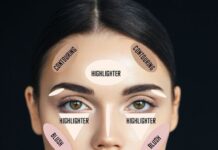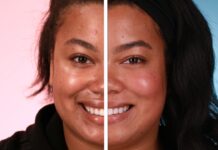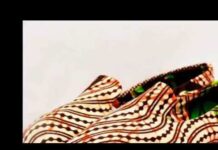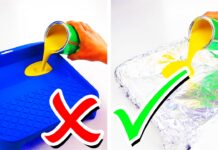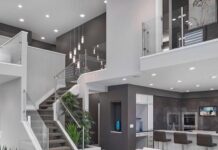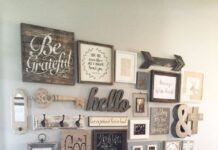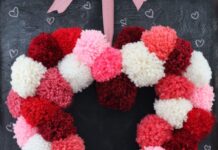A recipe is a formula
This first series of interior decorating recipes are based on an all white room. Imagine a room where the timber floor boards have been painted (or stained) white. The ceiling, walls and architectural detailing (skirting boards…) have also been painted white. This is the starting point for the decorating recipes detailed in this article. However before outlining the optional recipes for an all white room we need to look at the tools and rules of design.
Develop you design skills by becoming a great observer
It is important when decorating any room to considered the elements and principles of design. Margaret Lord a pioneer Australian designer stated ‘…it is through the wide and continuous observation of many things that good taste as well as knowledge develops’. One of the most helpful things you can do to develop your design skills is to become a great observer. When you analyze interior design; check for each element and principle of design individually. One of the best ways to do this is to ask yourself questions, for example ‘what sort of lines have been used are they horizontal, vertical, straight or curved?’ Then do this with each element then check how each of the principles of design has been adhered to. You can also play around with design ideas at www.sampleboard.com
The Elements and the Principles of Design
Color, line, pattern, texture and form/shape/area/space are the elements or tools the decorator has to work with. To unsure the design is successful the elements need to be used in a way that will adhere to the principles or rules of design. The principles are harmony and unity, contrast and emphasis, proportion/gradation/alternation, discord and variety, rhythm/repetition/radiation and balance.
Use (the tools of design) the elements carefully
Black and white; often referred to as non colors or neutrals can be used to create color schemes. Colors are basically warm or cool, light or dark. Color is one of the easiest ways of creating harmony and unity in a room. As you will see in the following recipes the colors selected are repeated throughout a room. Color can also make a room appear cooler or warmer. It is a powerful design element.
Elements color, line, pattern, texture
Lines can be straight, curved or wavy and can be horizontal, vertical or diagonal. For a room to work it is best to have a dominate line and then add another type of line for contrast. Rooms can be enhanced with the use of pattern. Patterns can be geometric, stylized, abstract or naturalistic. Too much patterns can be tiring and should be balanced with plain surfaces. Textures add interest textures can be smooth, rough, dull or glossy. The texture used can indicate the style for example smooth marble can create a sense of cool luxury. Rougher wool textures can create a sense of warmth and comfort.
Element of area/space/form/shape
Area and space usually refer to the flat surfaces in a room for example the floor, ceiling and walls. Form and shape are the three dimensional objects used in the space; the furniture, accessories and soft furnishings.
The rules of harmony and unity, contrast and emphasis
The principle of harmony can be achieved by making sure the items used in a room relate to each other in some way. For example the same colors, textures, patterns, lines and shapes are used. To add interest and stimulation to a room the principle of contrast and emphasis can be applied. For example to a room dominated by smooth textures like a kitchen a rough woven bar stool can be added.
The rule of proportion/gradation/alternation
The rule of proportion/gradation/alternation is best explained like this; proportion is the relationship between size and shape for example big to small, fat to thin, square to round. Gradation refers to the amount of difference between these relationships and alternation is about alternating these sizes and shapes to create good design.
The rule of discord and variety
This is where an irregular, unexpected or unusual object is introduced to a room adding variety and interest. This works well if the object has some sort of relationship to some other object in the room. For example it is the same color or shape as another object in the room. An example of this rule is to add a modern chair to a room decorated in a traditional style.
The rule of rhythm/repetition/radiation
The principle of rhythm occurs when the objects you place in a room are arranged in such away it causes the eye to travel from one object to the other easily. A bit like musical notes on a page. Repetition is achieved with something like a border or motif which causes the eye to travel in a linear direction. Radiation is achieved by a central object or circular pattern catching the eye then the eye following it out of the pattern..
The rule of balance
Balance is achieved by playing one element off against another. One way this can be done is with symmetrical or asymmetrical balance. To create symmetrical balance; arrange objects to be the same on either side of an imaginary line create a mirror image. An example of this is two lamps placed on two side tables on either side of a sofa. You could achieve asymmetrical balance by using a floor lamp on one side of the sofa and a side table with a lamp on the other side.
1st series of interior decorating recipes using an all white room
Now back to the promised recipes. Many cooking recipes have some basic ingredients. Then a number of variations on the same dish can be developed. Below are the ingredients for the basic all white room. Then added to this are the ingredients required to make it a black and white room. It may be helpful to go to this link and view a sample board of the proposed design created in this recipe http://wp.me/p1jrSa-ge
Recipe 1: The Black and White is Always Right Recipe
Basic ingredients for an all white room
Timber floor boards – painted white
Skirting board, architraves – painted white
Ceiling and walls – painted white
To create a black and white room; add the following ingredients
Black and white floor rug – in a cow hide like print (adding color, pattern and texture to contrast with the plain white floor)
Wallpaper – black and white in a stylized botanical design (adding contrast, pattern and color to plain wall)
Curtains – in charcoal linen (adds texture and dark contrast to white wall)
Sheer curtains – in white (Contrasts with charcoal curtain allows light into room)
White sofa and cushions (creates harmony of color)
A brown leather armchair – with zebra like black and white upholstery side feature (this is the discordant object)
Black side and coffee tables – in straight lined rectangular design (contrasts with white wall and repeats black)
Floor cushion fabric – in bold geometric faux leather (adds contrast to the white floor, pattern and texture)
Table Lamps – with chrome base and rectangular lamp shades with geometric pattern (shine of base adds shinny smooth texture, pattern and color contrasts with plain white wall)
Sculptures – black in stylized human form (adds interest to room)
Scatter cushions – black and silver (contrast with the white sofa and the silver adds shine to dull surfaces of sofa and chair)
Recipe 2: White and lively Hot Orange
Basic ingredients for an all white room
Timber floor boards – painted white
Skirting board, architraves – painted white
Ceiling & Walls – painted white
Sofa – white fabric
Cushions – white fabric
To turn the all white and what can sometimes be a clinical room into a room that appears warm and inviting select warm colors. In this example orange, gold, tan with touches of black and grey creates a hot lively room. To achieve this just add the following ingredients. It may be helpful to go to this link and view a sample board of the proposed design created in this recipe http://wp.me/p1jrSa-ge.
Ingredients
Wallpaper – abstract gold (adds texture, pattern and color a contrast to white walls)
Curtain Fabric – grey and charcoal stripe velvet (adds pattern, texture and dark contrast)
Floor Rug – tan geometric pattern (adds color, texture and pattern to plain floor)
Armchair – orange modern replica (adds curved lines to a room dominated with straight lines)
Side Tables – honey timber eco friendly (in color harmony and repeats straight lines and other rectangular shapes)
Ottoman – tan, brown animal skin pattern with touch of white (is discordant object in room)
Ottoman – the ottomans could be of Faux Leathers in tan and orange (if harmony required)
Cushions – deep orange and black (repeats colors and emphasis’ white sofa and orange chair)
Floor lamp – honey timber with black and grey shade (repeats timber in side tables, black and grey of curtains)
Table lamp – black weave (adds texture repeats black)
Pendant light – black weave (adds texture repeats black)
Art Work – abstract in orange, grey and charcoal (repeats colors grey and charcoal emphasized because of dark red orange)
Recipe 3: White and Cool Blue Room
If you have a white room that appears hot and has a lot of glare you can transform it into a room that appears tranquil and cool by adding cool colors. In this example blue has been added to the white room. Too much blue can be depressing and dull. This has been overcome by adding touches of light toned yellow and crisp white furniture. To achieve this just add the following ingredients. It may be helpful to go to this link and view a sample board of the proposed design created in this recipe http://wp.me/p1jrSa-ge
Ingredients
Wallpaper – Blue in a contemporary pattern (adds color, pattern and texture to contrast with white wall)
Shutters – white (adds subtle pattern)
Floor rug – blue with touches of light toned yellow (adds color, texture, pattern to contrast against white floor)
Sofa – White (creates harmony and unity of color, shape and line)
Armchair – White leather (creates harmony and unity)
Coffee table – replica of Isamu Noquchi table in white (adds curved lines to contrast with straight lines in room)
Side tables – simple cube design in white (creates harmony)
Pendant light – white (repeats white, adds curved lines and round shape of contrast)
Floor lamp – Sculpture like in white (harmony but unexpected design makes it appear discordant)
Table lamps – simple white shades with chrome base (in harmony adds texture of shine, curved lines and round shapes)
Art Work – Abstract blue and grey (adds contrast to plain white walls and repeats blue in room)
Fabrics for cushions – Linen in toned yellow (contrasts with blue and texture), retro pattern in toned yellow and white (adds contrast and pattern), damask in blue and soft grey (in harmony, adds pattern)
When you start on the wonderful journey to understand design it is like learning a new visual language. It is not always easy to express design in words. For this reason it is important to look at the images mentioned in this article and then take every opportunity to view good design it is everywhere. All we need to do is keep our eyes open. It takes time and practice to learn the beautiful visual language of design.










